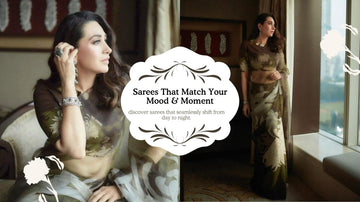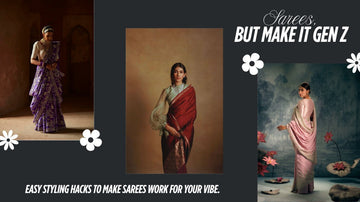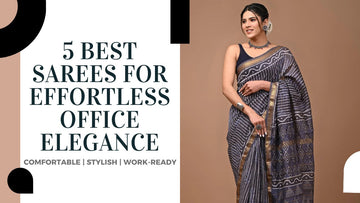Elegant Indian Silk Sarees That Define Traditional Luxury
Few garments capture the timeless appeal of Indian silk sarees like they do, celebrating culture, elegance, and beauty through clothing. These graceful drapes represent the soul of Indian heritage, woven through centuries of craftsmanship and tradition. Whether it’s a wedding, a festival, or a formal event, a silk saree can turn every moment into something extraordinary. The elegance, richness, and variety of silk sarees reflect India’s cultural depth and artistic excellence.
The Rich Heritage of Indian Silk Sarees
A Tradition Woven in Time
Silk weaving in India has roots that run deep into ancient civilization. Texts from as early as the Vedic era mention the luxurious nature of silk. Over the centuries, the art of silk weaving flourished under royal patronage. Each region developed its distinct style, technique, and design, making Indian silk sarees a diverse treasure trove of traditions.
These sarees were not just fashion statements; they were considered auspicious. In many parts of India, silk sarees are an integral part of religious ceremonies and wedding rituals, symbolizing prosperity and grace. The intricate motifs and patterns used in these sarees often carry spiritual or cultural significance, from temple borders to floral designs representing fertility and abundance.
The Diverse World of Indian Silk Sarees
India’s silk saree landscape is as diverse as its geography. Every region contributes a unique style, offering a vibrant palette of textures, colors, and designs.
Banarasi Silk Sarees
Originating from the holy city of Varanasi, Banarasi sarees are renowned for their Mughal-inspired motifs, heavy brocade, and use of gold and silver zari. They are especially favored for bridal wear due to their regal look and rich embroidery. Each Banarasi saree is a masterpiece that takes weeks or even months to weave.

Kanjeevaram Silk Sarees
Hailing from Tamil Nadu, Kanjeevaram sarees are considered the queen of silks. Known for their bold hues, wide contrast borders, and mythological motifs, these sarees are highly durable and age beautifully over time. No South Indian wedding is complete without the bride adorning this luxurious drape.

Mysore Silk Sarees
These sarees are known for their lightweight texture, subtle sheen, and elegant simplicity. Produced in Karnataka, Mysore silks are perfect for those who love understated luxury. Their soft touch and breathable nature make them ideal for both formal and casual events.

Paithani Silk Sarees
From the looms of Maharashtra, Paithani sarees are known for their vibrant colors and peacock or lotus motifs. These sarees are handwoven with intricate detailing and often include real zari, making them a prized possession in a Maharashtrian bride’s trousseau.

Tussar and Chanderi Silks
If you prefer elegance with a touch of simplicity, Tussar and Chanderi silks from central and eastern India are ideal. These sarees are lightweight, breathable, and highly suited for summer events, offering a beautiful drape with subtle embroidery.

The Art and Craft Behind the Weave
Creating a silk saree is not just labor—it’s love and legacy woven together. From dyeing the silk threads with natural colors to setting them up on handlooms, the entire process demands immense skill, patience, and dedication.
In numerous traditional weaving families, the techniques are handed down from one generation to the next. The precision required to maintain symmetry, incorporate zari work, and retain softness without compromising on strength makes each silk saree a labor of craftsmanship and devotion.
Natural silk itself is a luxurious fiber extracted from the cocoon of the silkworm. India is the second-largest producer of silk, and it offers multiple varieties including Mulberry, Eri, Muga, and Tussar, each lending a unique quality to the saree.
A Wardrobe Essential Across Generations
Silk sarees are more than occasion wear—they are heirlooms. A grandmother’s wedding saree often finds its way into the wardrobe of the next generation. The timeless appeal of silk makes it resistant to the trends of fast fashion. In fact, many women prefer investing in silk sarees for their durability, grace, and ability to blend tradition with modern aesthetics.
Every drape of a silk saree tells a story—of love, celebration, tradition, and identity. It becomes part of family albums, life events, and cherished memories.
Modern Styling with Silk Sarees
While silk sarees have always symbolized tradition, today’s generation is redefining how to wear them. Fashion designers and influencers are mixing vintage silk with modern cuts to create stunning fusion outfits. High-neck blouses, off-shoulder tops, jackets, and belts are now paired with silk sarees for contemporary styling.
Young women are increasingly choosing silk sarees not just for weddings, but also for college farewells, award ceremonies, and even formal meetings. This revival has given silk sarees a modern, chic identity, without diluting their cultural significance.
The Importance of Authenticity and Certification
Buying an authentic silk saree is important not only to ensure quality but also to support the artisans who put their heart into the craft. Silk Mark India is the certification that authenticates pure silk. Always look for this mark when purchasing to avoid synthetic imitations.
With online shopping rising, many reliable portals now showcase certified and handcrafted silk sarees. Government emporiums and artisan platforms are also excellent sources of genuine silk products.
Caring for Your Silk Saree
A silk saree is a delicate garment that requires careful handling and maintenance. Here are a few tips:
- Always dry clean your silk sarees.
- Avoid folding along the same lines repeatedly; change folds to prevent tearing.
- Store sarees in a muslin cloth to allow the fabric to breathe properly.
- Use natural repellents like neem leaves or cloves to protect from insects.
- Keep away from direct sunlight to retain the color and luster.
With the right care, a silk saree can last for decades, maintaining its beauty and shine for generations to come.
The Rise of Sustainable Silk Sarees
As the fashion world embraces sustainability, eco-friendly silk sarees are becoming a trend. Brands are now creating silk using non-violent methods (Ahimsa Silk), hand-spun yarns, and natural dyes. These sarees support ethical practices and empower local weavers while still offering the grandeur of silk.
Opting for sustainable silk is not just a fashion statement—it's a commitment to preserving our environment and supporting traditional Indian craftsmanship.
In a world obsessed with quick trends, Indian silk sarees remain timeless symbols of grace and heritage. They blend culture, history, and artistry in a way no other attire can. Whether you’re draping one for a wedding or styling it for a corporate event, the unmatched elegance of silk always leaves an impression.
The charm of silk sarees lies in their dual ability to honor the past and embrace the future. With evolving styles and sustainable practices, silk sarees are not just surviving—they're thriving. Invest in one today and become a part of a tradition that’s as rich as India’s history itself.









